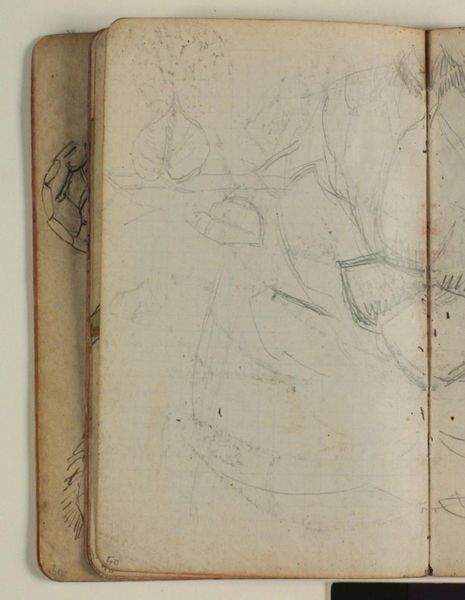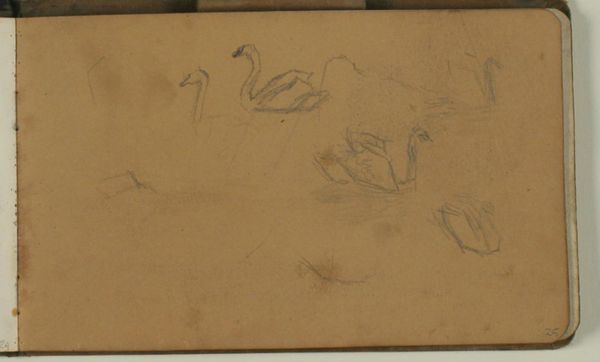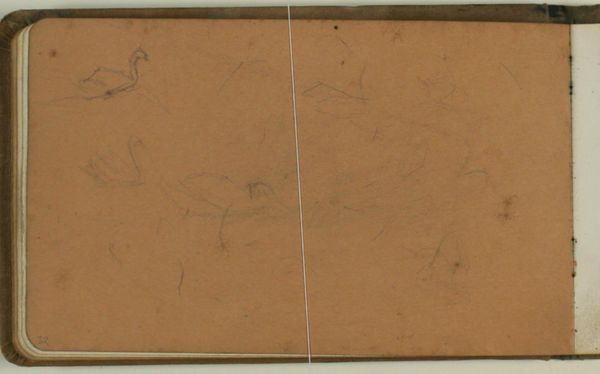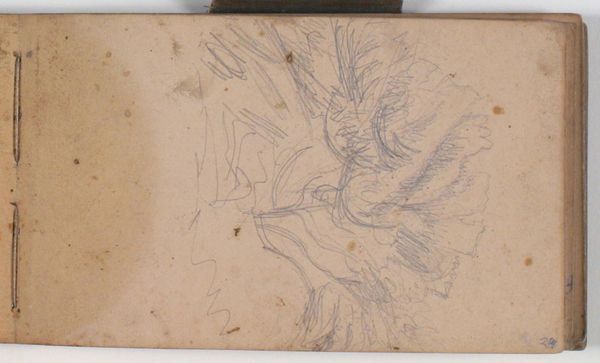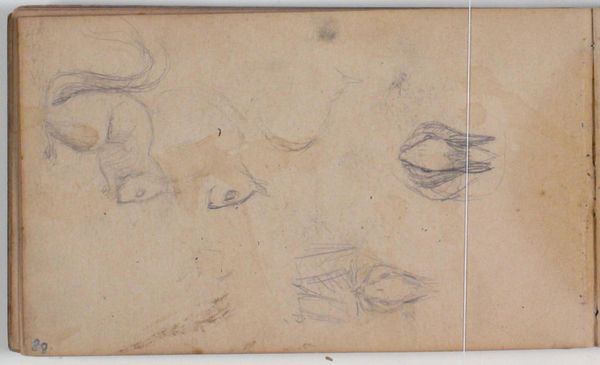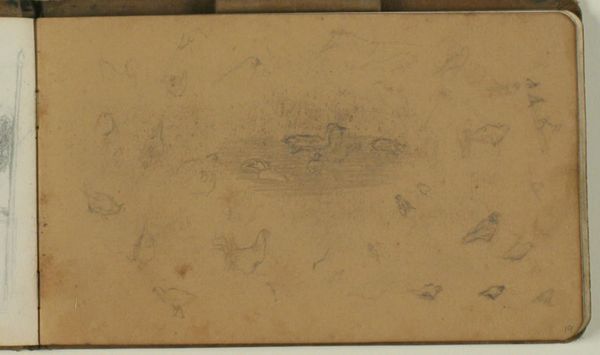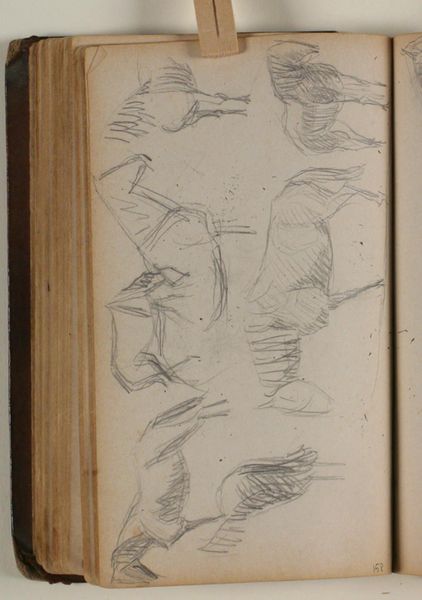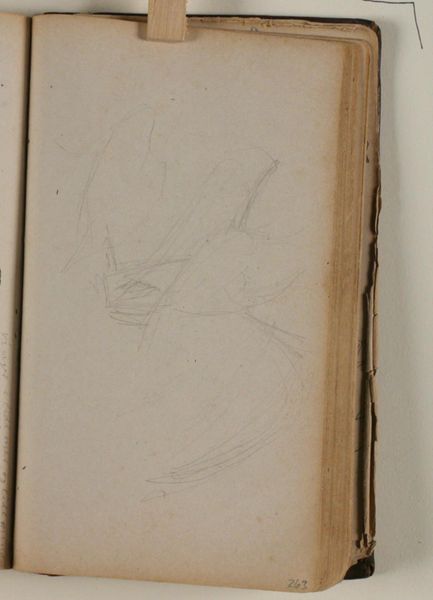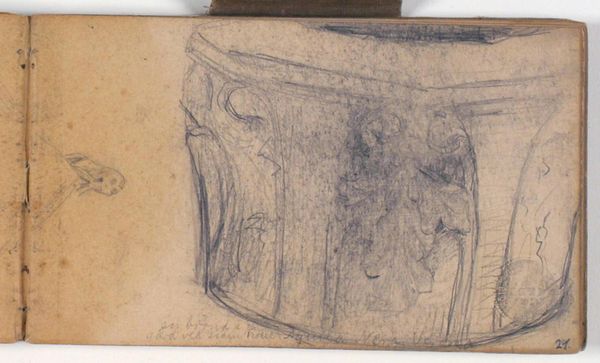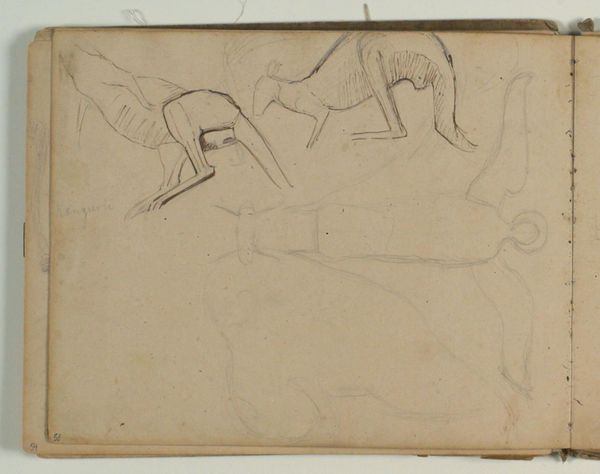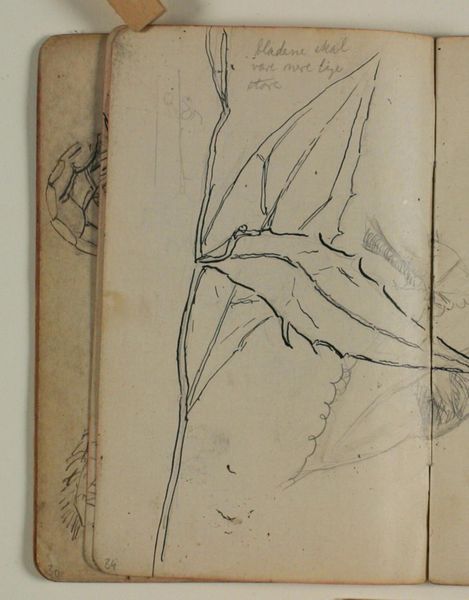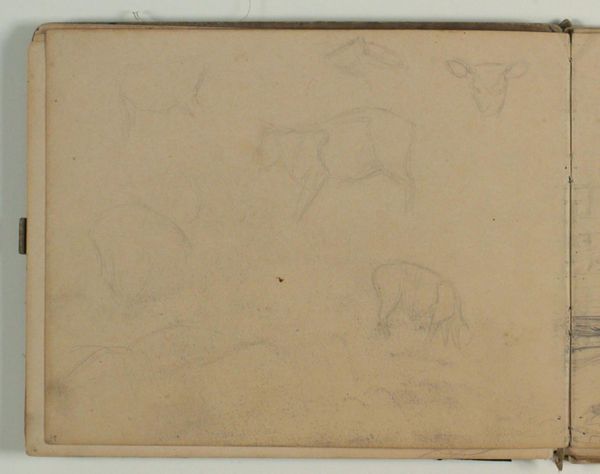
drawing, paper, charcoal
#
drawing
#
animal
#
charcoal drawing
#
paper
#
charcoal
#
realism
Dimensions: 101 mm (height) x 168 mm (width) (bladmaal)
Curator: Welcome. Before us we have "Studier af hesteskulptur," or "Studies of Horse Sculpture," a drawing by Niels Larsen Stevns from 1896. It is rendered in charcoal on paper, and currently resides here at the SMK, the National Gallery of Denmark. Editor: My initial impression is one of raw energy. The charcoal lines feel almost frantic, like the artist was racing to capture a fleeting moment or an impression. It's gestural and incomplete, and, given the title, it is intriguing to observe how sculptural the sketch of the horse's form seems to be. Curator: Indeed, considering it's charcoal on paper, that sculptural quality is interesting. One can almost imagine Stevns's charcoal mirroring the tools of a sculptor, adding and subtracting material to define the form of the horse. You sense his engagement with form and volume, with his labor so plainly visible in the repeated lines. This contrasts markedly with academic painting styles so valued at the time. Editor: I'm interested in situating Stevns's work within its social and historical moment. In 1896, the industrial revolution was transforming society, changing relationships with animals, and mechanizing work. What did horses represent within these social upheavals? Were these studies an attempt to understand the transition away from them and other draft animals? Curator: The representation of the horse could definitely be seen as symbolizing a connection to agrarian labor practices—a rural identity amidst urbanization. In 1896 horses were very much present in an urban setting too, so it perhaps represents that tension of the rural and the industrial coexisting. This work may be less about an individual "masterpiece" than a documentation of artistic process itself and it emphasizes how the drawing material – charcoal – allowed him to do this, allowing him to see it as sculpture too. Editor: Perhaps we might read this drawing through the lens of gender as well? Were the physicality and labor of sculpture still considered to be coded male, while the surface qualities of the flat drawing were feminine? By uniting the drawing medium with sculptural forms of the horse, was he grappling with a type of masculine creativity that needed definition as such, perhaps distinct from painting? Curator: These are helpful provocations. It suggests Stevns' exploration isn't purely technical. The drawing complicates easy binaries between different types of work. Ultimately, it suggests how process-oriented practice reframes our relationship to art and how we should look to understand the material means of making it. Editor: This has provided some interesting possibilities, prompting consideration of historical contexts and contemporary theories around art, identity, and the labor of artistic practice. It underscores the complexities within seemingly simple studies and how context enriches our analysis.
Comments
No comments
Be the first to comment and join the conversation on the ultimate creative platform.
